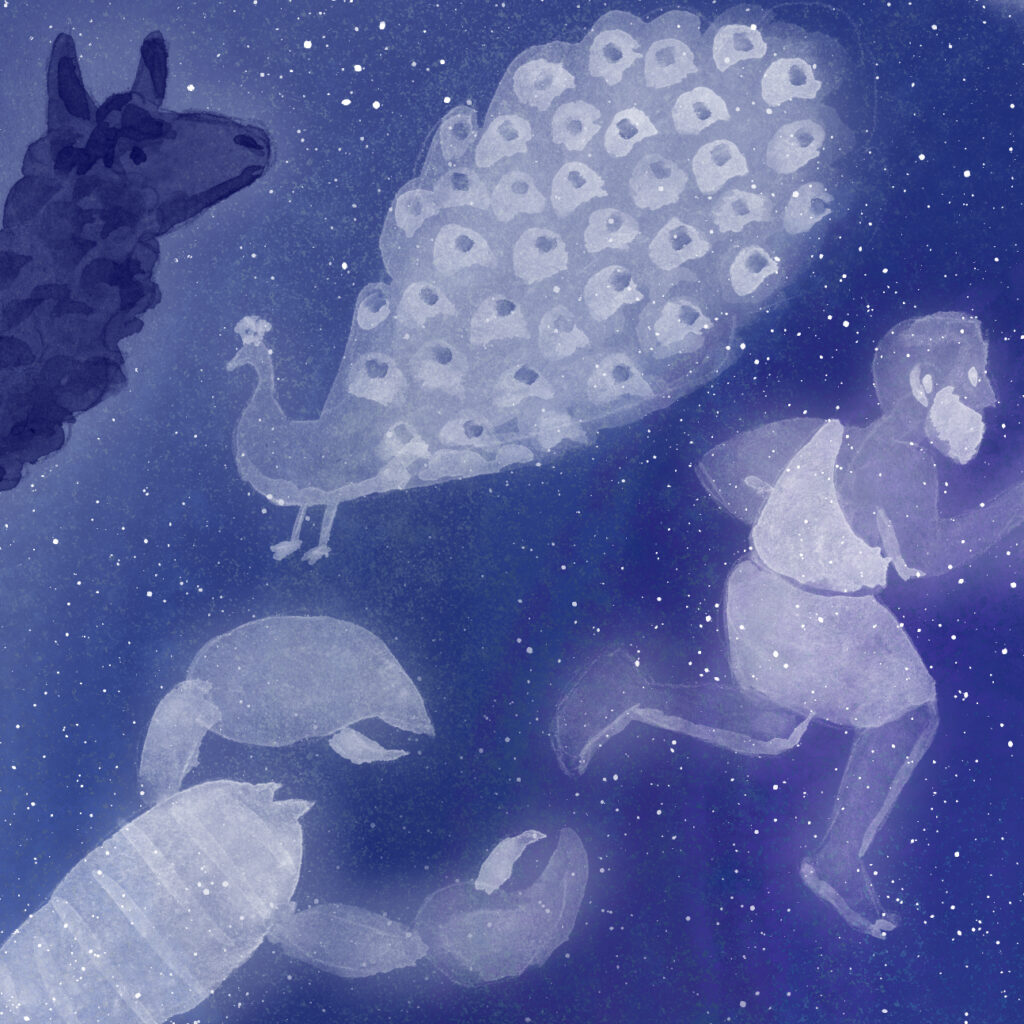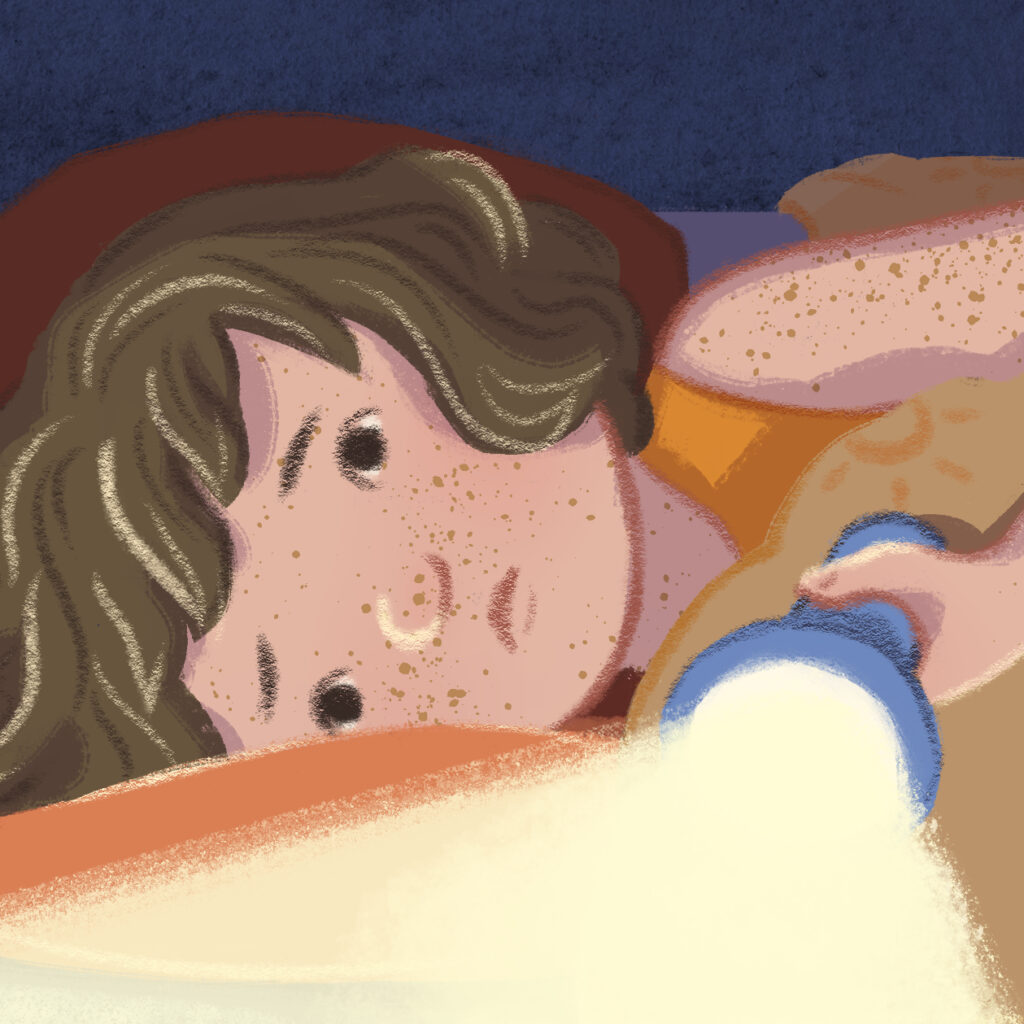When the Stars Come Out
Lily loves her family’s tradition of taking after-dinner walks together, but as summer rolls by and the sun dips lower in the sky, Lily’s fear of the dark begins to grow.
Lily’s mother points out the wonders of the night sky from the sparkling constellation of Orion to the glowing trail of the International Space Station passing overhead but will Lily be able to look up and see the beauty all around her?
Written by astronomer Tanya Hill, who overcame her own childhood fear of the dark and has gone on to spend her career sharing the wonder of the night sky with others.

Buy from…
…or find it locally through Your Bookstore.
Behind the Scenes
What I was thinking…
When I was first reading through the text, I wanted to make sure that I fully understood all the science behind it. So I grabbed office supplies to use as props for the Sun, the Earth and various constellations, and I moved them around to depict a day and a year. I knew then that I wanted to draw Lily doing the same things, to encourage readers to act it out too.
A torch is the obvious sun stand-in, and once I’d introduced it for that purpose, its role quickly expanded into a central part of Lily’s illustrated journey. While the entire story is from Lily’s perspective, she spends the main arc somewhat mentally disconnected from her family, whose conversation forms a large part of the text. I wanted to depict that disconnection by giving Lily’s attention to something else – the torch was perfect again, now symbolising her desire to cling to the Sun, and the daylight.
How I made the pictures…
I drew the illustrations digitally in Clip Studio Paint. I used separate layers for the shapes and the lines, and kept the characters separate from the backgrounds.
I painted Lily’s imagination in monochrome watercolour, then scanned it in and edited the colours digitally. I did the same to make the sky textures.
Who my co-creators were…
Dr Tanya Hill is the fabulous author, as well as the Senior Curator of Astronomy at Museums Victoria. The story is inspired by her own childhood fear of the dark. She kept me on track when I accidentally drew the stars in the wrong orientation!
The team at Museums Victoria Publishing were the absolute best to work with, giving me heaps of creative freedom, along with super useful feedback. Ella Meave, Sasha Beekman and Julia Donkersley – thank you!!!
Learn more:
Try out some hands-on constellation activities put together by Museums Victoria.
Find out which constellations are in the sky over your home tonight on the timeanddate website.
Too much light pollution for star gazing at home? Check out a light pollution map to find your nearest dark skies. In general, the further from a city you are, the more stars you’ll see. Find tips for decreasing light pollution on the Dark Sky website.
Check out Ngarrngga’s Sky category, for information and activities to incorporate Indigenous astronomy across all sections of the curriculum (Levels 5-8), from seasonal calendars to stellar scintillation!


